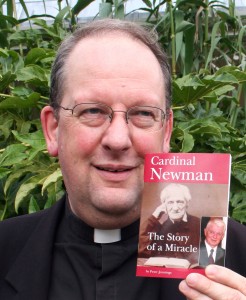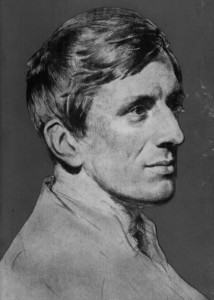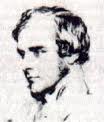Cardinal Newman: The Questions Continue
On March 16, 2010 the Holy See announced that Pope Benedict XVI will preside over the beatification of the Venerable John Henry Newman on September 19, 2010. The location for the Mass hasn’t been decided yet, but the site of the former MG Rover factory is now the “preferred venue†for Benedict XVI’s beatification of Cardinal Newman. It is easier for security, and is closer to the place where Cardinal Newman will be venerated: Birmingham Oratory. One of the concelebrants of the Mass is sure to be the Most Rev. Vincent Nichols, Archbishop of Westminister and head of the Roman Catholic Church in England and Wales.
In preparation for his beatification, in October 2008 authorities opened Cardinal Newman’s grave to exhume and rebury his body. Gay rights activists protested the separation of Newman from his longtime companion with whom he shared his burial place. The idea of Catholic pilgrims going to the gravesite of two men to venerate one of them as a “Blessed” was too uncomfortable for church authorities to tolerate.
In a queer coincidence on the eve of Newman’s beatification, Birmingham Oratory experienced an upheaval over a relationship between the provost of the Oratory and a young man. Their relationship appeared to echo Cardinal Newman’s relationship with a priest, Fr. Ambrose St John a century before.
At the heart of the conflict are the allegations surrounding a close but chaste friendship between the former Provost of Birmingham Oratory, Fr. Paul Chavasse, and a young man. Fr. Chavasse had also served as Actor for the Cause of Newman’s canonization. He has been replaced in both positions by the Very Rev. Richard Duffield. 
“Around 2 1/2 years ago, in the autumn of 2007, Fr. Chavasse began to form an intense but physically chaste friendship with a young man, then aged 20, which the Fathers of Birmingham Oratory regarded as imprudent,” an Oratory spokesman said. The young man had been rejected as a candidate for the priesthood, and Fr. Chavasse had complained on his behalf. Fr. Chavasse assured skeptical members of the community that he was not sexually involved with anyone, but these men continued to confront Fr. Chavasse and informed Rome of their concerns and suspicions.
Fr. Felix Seldon was appointed to conduct an “apostolic visitation” of the Birmingham Oratory. Here is the upshot:
– Fr. Paul Chavasse “willingly” resigned as Provost of the Oratory and also as Actor for the Cause of Newman’s canonization in December 2010 – less than a year before Newman’s beatification. He was directed to leave for a long retreat, or a fund raising trip to America–depending on which news story you read. Anyway, he’s vanished.
– The three members of the Birmingham Oratory that complained the loudest about Fr. Chavasse–Fr. Philip Cleevely, Fr. Dermont Fenlon and Br. Lewis Berry have been ordered “to spend time in prayer for an indefinite period” in religious houses hundreds of miles apart. No date was given for their return to the Birmingham Oratory.
An Oratory spokesman downplayed the homosexual allegations of the conflict. He explained there had been disagreements in the community how best to approach the beautification of their founder, Cardinal Newman. Fr. Fenlon, Fr. Cleevely and Br. Lewis were described on one blog as “known upholders of tradition and conservative Catholic values.” They have publicly opposed an interpretation of Cardinal Newman as a patron of conscientious dissent. As a theologian, Cardinal Newman played an important role in developing the modern formulation of the primacy of conscience, which is of fundamental importantance to gay and lesbian Catholics who reject in good conscience the standard teaching on sexuality.
The three men have also publicly protested the Catholic Bishops’ Conference of England and Wales lack of vigorous opposition to sex education and relationships policy in schools put in place by the British government. Archbishop Vincent Nichols is president of the Catholic Bishops’ Conference. He previously served as Archbishop of Birmingham from 2000 to 2009.
Bishops of any stripe don’t appreciate publicity-seeking troublemakers. With the halogen glare that will accompany the pope’s visit in September, I’m not surprised all four men were sent packing to distant monasteries.
Questions about Cardinal Newman’s sexuality revived when he was exhumed in 2008.
Newman, a founder and member of the Birmingham Oratory, was buried in the small cemetery at Rednal near the Oratory County house. At his request, he was buried with Fr. Ambrose St John.
At the request of the Vatican, the British government gave permission for the cardinal’s remains to be transferred from Rednal into a sarcophagus that will stand between the marble columns opposite the Holy Souls’ Altar in Birmingham Oratory Church. The Vatican is understood to have made the request so that Roman Catholic pilgrims could come and pray at Newman’s tomb. It is not traditional for veneration to occur at shared tombs.
Responding to recent insinuations in the British press that Cardinal John Henry Newman was gay and was an intellectual forefather of today’s dissenters from Catholic teaching, Fr. Ian Ker, the author of the “definitive” biography of Newman, called the claims that the cardinal was gay are “absolute rubbish.” He says there is “irrefutable evidence of Newman’s heterosexuality.”
This evidence rests in the “sacrifice” to a life of celibacy to which Newman felt he had been called at age 15. “A modern reader should not need to be reminded that in 19th century England homosexuality was illegal and generally considered to be immoral,” wrote Fr. Ker. “The only ‘sacrifice’ that Newman could possibly been referring to was that of marriage,” he said.
In a article entitled “John Henry Newman and the sacrifice of celibacy,” published in L’Osservatore Romano on September 3, 2009, Fr. Ker comments that “the decision to exhume the body of Venerable John Henry Newman has provoked reactions, in particular on the part of the homosexual lobby.” According to Ker, this “protest” carries the idea that “Newman wanted to be buried with his friend because he had some kind of bond with him or something more than just a simple friendship.”
When Fr. Ambrose St John, who was 14 years his junior, died in 1875, Newman compared his own grief to that of a husband’s for a wife. “I have ever thought no bereavement was equal to that of a husband’s or wife’s, but I feel it is difficult to believe that any can be greater, or anyone’s sorrow greater, than mine.”
Newman wrote in his diary about Fr. St John’s love for him: “From the first he loved me with an intensity of love, which was unaccountable.” He later added: “As far as this world was concerned, I was his first and last…he was my earthly light.”
The cardinal repeated on three occasions his desire to be buried with his friend, including shortly before his death in 1890. “I wish, with all my heart, to be buried in Fr Ambrose St John’s grave – and I give this as my last, my imperative will,” he wrote, later adding: “This I confirm and insist on.”
The two men had a joint memorial stone that is inscribed with the words he had chosen: Ex umbris et imaginibus in veritatem (Out of shadows and phantasms into the truth.”)
British gay rights activist Mr. Peter Tatchell observed: “It is impossible to know whether or not the relationship between Newman and St John involved sexual relations. Equally, it is impossible to know that it did not.”
“To be fair and to err on the side of caution, given both men’s rather orthodox religious beliefs,they probably did not have a sexual relationship. It is likely that they had a gay orientation but chose to abstain from sex. Sexual abstinence does not, however, alter a person’s orientation. A person can be gay and sublimate hteir gayness into spiritual and artistic pursuits, and into strong, intense platonic same-sex relationships, which is probably what Newman and St John did.”
“But many of these platonic relationships were, in fact, expressions of latent homosexuality which never fund physical expression because the men concerned lived in a homophobic culture where they either had no conception of the possiblity of same-sex love or, for religious reasons, dared ot express this love sexually.” 
“Ker’s article is full of bald assertions that Newman was heterosexual, but it offers no proof or evidence. It dismisses the possibility that the Cardinal could have had a relationship with St John and even condemns the plausible suggestion that he might have been gay and celibate.”
The history of the Catholic Church is littered with popes, cardinals, bishops and priests who were secretly gay. Down the ages, lots of clergy have had gay relationships. Indeed, about one-quarter of the current Catholic priesthood is estimated to be gay. Why should anyone be surprised by the suggestion Cardinal Newman might have had a same-sex relationship?”
The sexuality of Newman has long been a subject for conjucture. Charles Kingsley’s famous attack on Newman for his dishonesty, insincerity and sexual ambiguity. Kingsley compared Rome’s Catholic descendants as treacherous and effeminate and the pagan Germanic people or their English Protestant descendants as honest, trustworthy, and physically strong defenders of truth. When in 1864 Kingsley asserted that “truth, for its own sake had never been a virtue with the Roman clergy . . . [and] Father Newman informs us that it need not, and on the whole ought not to be; that cunning is the weapon which Heaven has given to the saints wherewith to withstand the brute male force of the wicked world which marries and is given in marriage,” Newman roared back with his seminal work Apologia Pro Vita Sua.
John Henry Newman’s first steps toward Roman Catholicism came from his participation, study and writings as part of the Oxford Movement. This religious movement began 1833 by Anglican clergymen at Oxford University to renew the Church of England by reviving certain Roman Catholic doctrines and rituals. This attempt to stir the Established Church into new life arose among a group of spiritual leaders in Oriel College, Oxford. Prominent among them were John Henry Newman Richard Hurrell Froude. Froude died in 1836 at the age of 33. Newman, 35 years old at the time, was profoundly moved by his death. 
The idea that the Oxford Movement contained a significant stream of homoeroticism was popularized by Sir Geoffrey Faber in the book Oxford Apostles – A Character Study of the Oxford Movement, published in 1933. One commentator declared, “Of the mutually feminine attachment which bound Newman and Froude together, there is no need to say more.”
In his journal of the late 1820s Froude records his struggle against “vile affections” and, referring to an unnamed undergraduate private pupil, cautions himself “above all (to) watch and pray against being led out of the way by the fascination of his society.”
Newman’s poems of the 1830s echo similar themes (“A Blight”), but also use well-known Biblical male pairs to make suggestive homosexual statements (“David and Jonathan” and especially “James and John,” with its reference to a state where “man may one with man remain.”
To his elegiac poem, “Separation of Friends,” Newman added these final lines after the death of Froude in February 1836:
“Ah! dearest, with a word he could dispel
All questioning, and raise
Our hearts to rapture, whispering all was well,
And turning prayer to praise.
And other secrets too he could declare,
By patterns all divine,
His earthly creed retouching here and there,
And deepening every line.
Dearest! he longs to speak as I to know,
And yet we both refrain:
It were not good; a little doubt below,
And all will soon be plain.”
“But isn’t it about time,” said one commenter on a British news site, “that the Church stopped all this hypocritical nonsense and admit that the man they are about to beatify was gay, and that he was in loved with Fr Ambrose St John to the extent where they even wanted to get buried together. They may well have lived chaste lives and suppressed their sexuality successfully, but you cannot get around the content of the letters passing between the two of them.”
“And instead of branding Newman as ‘intrinsically disordered’, and effectively saying that he should never have been a priest, let alone a Cardinal, as the current regime would have to say, they should celebrate the life of a wonderful thinker, a truly gifted writer, and a man who was not ashamed to express his love for another man while at the same time observing a celibate life.”
“I can’t believe the irrational and inhuman knots this hierarchy ties itself up in.”
These two books provide interesting reading on Cardinal Newman’s sexuality and careful expression: in The Friend (2003) the late historian Alan Bray presented major research on the relationship between Newman and St John, sifting thorugh the Cardinal’s diary, letters and notes. Secret Selves: Confession and Same-Sex Desire in Victorian Autobiography (2009) by Oliver Buckton argues that literary “secrecy”–the very act of holding back information in a novel or memoir–was a primary and provocative indicator of Victorian homosexuality. One of the works he examines in his book is Cardinal Newman’s Apologia Pro Vita Sua.
A great deal more can be said by quite consciously saying much less.
My first Nihil Obstat post about Cardinal Newman – “Keep it Secret” – can be found here.
